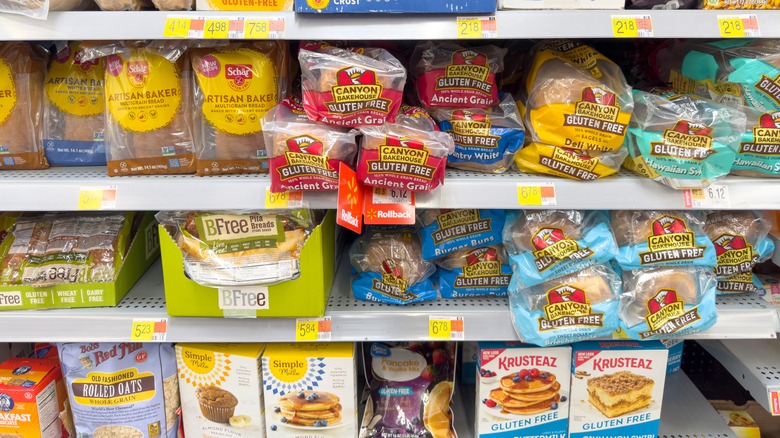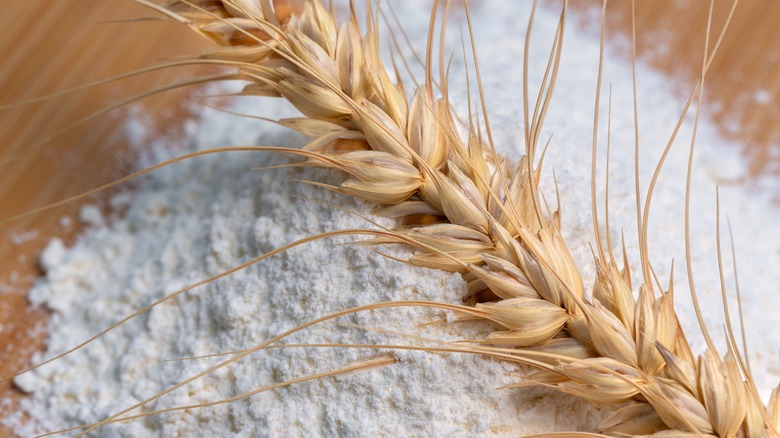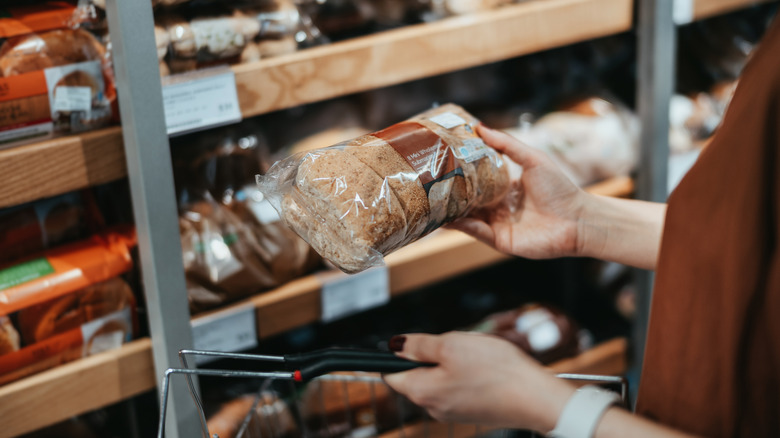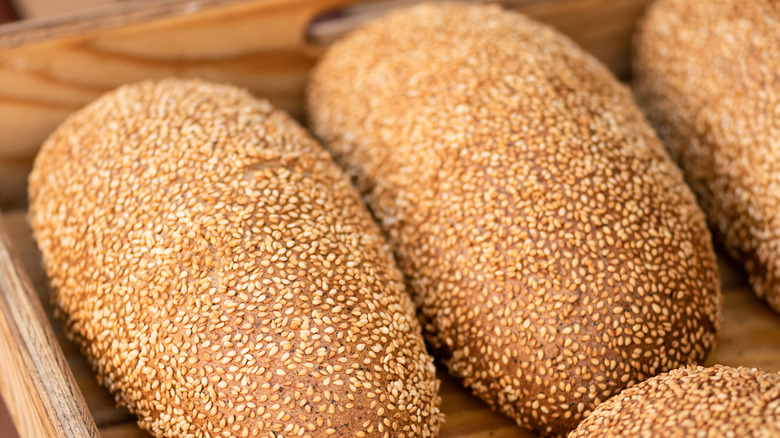3 Misconceptions You Shouldn't Believe About The Labels On Your Bread
When perusing the bread aisle at the local grocery store, it's easy to get completely overwhelmed — especially for those trying to be smart about what they buy. Even those who prefer to bake their own bread at home are faced with a barrage of information as to the quality of their ingredients. As consumers get more savvy about what goes into their shopping carts, marketing teams and buyers start slapping all kinds of health-conscious buzz words on their products. This practice, of course, creates plenty of confusion for those after the right loaf of bread for their needs.
It's times like these when it would be nice to have an expert on hand to help navigate the pitfalls of today's grocery store dynamics. Perhaps someone like Nathan Myhrvold, founder of the culinary collective known as Modernist Cuisine and lead author of the Modernist Cuisine cookbook series, for example. Myhrvold's latest venture is the cookbook "Modernist Bread at Home," and he's got some interesting thoughts on how consumers can cut through the marketing and focus on buying the bread that is right for them.
Pay no mind to the grind
The foundation of any bread is flour — the best bread comes from the best flour. But what's the best way to determine the flour quality of your favorite grocery store bread? Bread nerds will typically answer this question by referring to the grinding process that produced the flour in the first place. Most commercial mills use steel rollers to crush wheat grains into flour, but that process has come under scrutiny by those who praise the health benefits of stone-ground flour.
Based on this comparison, health-conscious consumers are often prone to purchasing bread that proudly features "made with stone-ground flour" on its packaging. The implication is that the roller mill process damages the wheat's nutritional quality, but is that really the case? According to Myhrvold, this is a bit of a misconception.
"Generally speaking, you can now get a better quality of flour from steel milling," he says. "Once upon a time, steel-milled flours could accidentally become overheated in the process of milling, and that would damage the starch and result in breads that didn't bake as well. But these days, steel-milled flour is arguably higher quality than stone-ground flour."
Of course there are other differences between stone-milled and steel-milled flours. Some people like the flavors that stone-ground flour imparts to their bread, and some recipes call for it specifically. But if your choice between the two is based on nutritional value, it's okay to take a breath and just pick whatever you like.
Organic is just a marketing buzzword
Like the buzzy use of terms like "stone-ground" and "artisan," the organic label has also come to imply a higher standard of health and nutrition. There are several brands of organic bread on the market today, but are they the ones that should make it into your cart? This is an area that Myhrvold chalks up to clever marketing campaigns.
"Ultimately, labels and marketing terms don't really mean that much in terms of quality of the bread," he says. "For example, the organic label is government-regulated and it doesn't mean what you might think it means."
In fact, one of the biggest influencers of grocery store trends in the past few decades has been the U.S. National Organic Program (NOP). This movement created a series of U.S. Department of Agriculture-approved standards that certified and marketed certain foods as organic. The main implication of certified organic food is that it has been produced without the use of synthetic materials, which creates additional health benefits for the consumer. In reality, NOP standards permit a variety of synthetic materials as part of the production and growth process in their organic food certification. This means that in certain situations, items like hydrogen peroxide, plastic mulch, and soap-based insecticides are allowed. With NOP standards what they are, the organic label may not be the gold standard that consumers often think it is.
More grains do not equal more health benefits
Multigrain bread is another variation that has become popular among health-conscious shoppers because if using one type of grain is good, then using more types of grain is better — right? Not so much. Sure, baking bread with different grains is a nice way to add flavor and texture, but Myhrvold states that the multigrain moniker is just another misunderstanding.
"It's not true that more grains are better," he says. "If you have an 8-cylinder car, it might be more powerful than a 4-cylinder car, but that's not the case when it comes to the grain count of a bread."
Shoppers who are looking for a more nutritionally balanced option should favor breads labeled as "whole grain" or "whole wheat" which indicates that every part of the wheat grain is present. During the milling process, the wheat grain is separated into three parts: bran, germ, and endosperm. Refined flour removes the nutritionally rich bran and germ and uses the less nutritious endosperm. Whole grain flour includes the bran and germ, making the bread more nutritious overall.
It's true that there is no shortage of smoke and mirrors bedeviling today's shopper, which is why Myhrvold considers buying bread from a local baker to be the best option. When that isn't an option, however, it's nice to see the quest for bread as less about grain count and more about personal preference. After all, it's more important to judge your bread on how well it complements your favorite egg salad recipe instead of how its flour happened to be milled.



